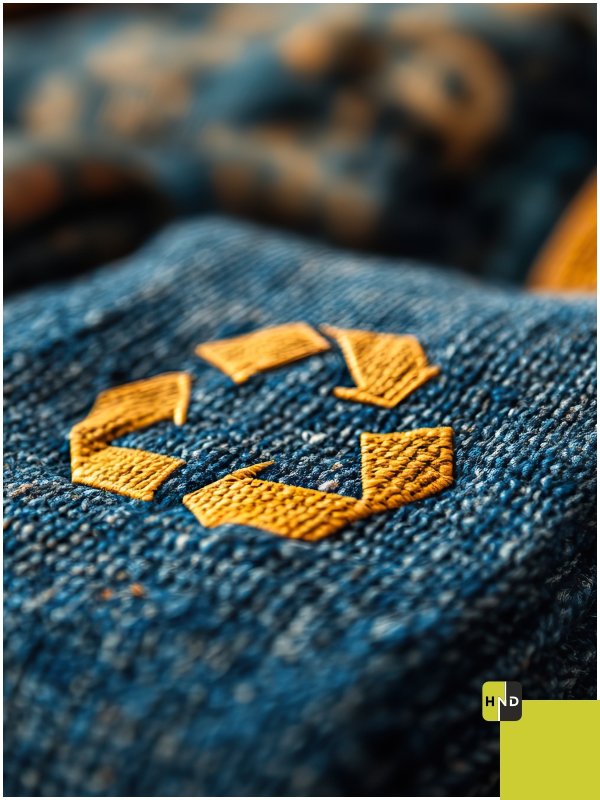Revolutionizing Fabrics
The textile manufacturing sector has always been linked to high-volume operations requiring significant resource usage. The rising environmental awareness brings forth innovative solutions that enable the development of sustainable materials that combine technological sophistication. The field of material science, together with production technology advancements, makes sustainable fashion accessibility possible between style and utility.
All stakeholders need to back sustainable textile breakthroughs that aim to lessen environmental repercussions while promoting ethical practice standards. The future needs eco-friendly and smart textiles as an absolute requirement to achieve sustainability.
Eco-Friendly Materials Reshaping the Industry
The future of textile innovation brings great promise through the development of sustainable materials that degrade while also recycling resources. New fabric materials consume far lower amounts of water and chemicals, and energy in comparison with conventional traditional fabrics. Organic fibers comprising plant-based textiles, along with bioengineered fabrics, create an environmentally positive solution that maintains exceptional quality standards. The recent industry trend demonstrates a growing interest in recycling textile materials into new products. Reusing old clothes together with plastic waste for fabric production decreases the need for fresh raw materials while stopping unnecessary waste from going into landfills. Manufacturing textile products with reusability needs to become our main strategy for reducing the negative effects that textile manufacturing causes to the environment.
Smart Textiles: A New Era of Functionality
Advanced textile fabrics benefit from technological integration by producing monumental changes in their practical applications. Smart textiles incorporating sensors and conductive fibers, and responsive materials have transformed three main industries, namely healthcare and sports, and fashion. Medical fabrics that include built-in monitoring capabilities enable healthcare professionals to monitor vital signs, thus supporting patients and healthcare workers in making early diagnoses and providing appropriate treatment. Performance benefits, together with comfort improvements, are achieved through athletic wear materials that wick moisture and regulate temperature. The fashion industry benefits from daily wearing clothing enhanced by textiles that automatically switch colors while cleaning themselves.
Sustainable Production Methods
The manufacturing processes of eco-conscious textile manufacturing require equal attention to materials for production improvements. Traditional dyeing processes use excessive amounts of water together with chemical pollutants in their manufacturing operations. The development of sustainable dyeing procedures represents alternatives through waterless dyeing methods and natural plant-derived pigments to decrease hazardous discharge. The combination of efficient textile mills with renewable power systems results in a cleaner manufacturing operation. The development of advanced 3D knitting and zero-waste design approaches optimizes material usage through complete material efficiency.
Ethical and Transparent Supply Chains
The pursuit of sustainability extends beyond manufacturing practices to require meaningful ethical practices. The public has started paying attention to the manufacturing origin and production methods of their clothing. Lack of transparency in supply chains hinders customers from confirming proper payment of wages and safety protocols and responsible material acquisition practices. Consumers can verify product information from ethical brands through certifications alongside blockchain technology implementations. The transparency encourages consumers to trust brands while choosing ethical shopping choices.
Consumer Awareness and the Shift in Demand
Public understanding of sustainable and smart textile products drives their increasing market demand. People today choose quality products over frivolous purchases thus, they select durable fashion items instead of fast fashion products. Sustainable values adopted by brands have started capturing customers, so the industry now needs to restructure its production methods. The connection between buyers and their choices depends significantly on educational campaigns and eco-labeling systems. Increased consumer knowledge about purchase decision effects motivates them to back brands establishing sustainable and ethical standards.
The Role of Government and Policy Support
Sustainable textile innovation relies significantly on governmental entities alongside regulatory organizations for its advancement. Green technologies, together with waste reduction methods and ethical labor practices, obtain positive changes through supportive industry policies. Companies adapt their impact through tax benefits for sustainable practices and restrictions on dangerous production methods. Textile production follows global sustainability goals because of the enforcement of international environmental regulations and agreements. The objective of achieving meaningful progress will become possible through government enforcement and partnership with industries.
Challenges and Future Prospects
Some barriers persist that stand in the way of sustainable and smart textiles becoming standard practice in the industry. Widespread adoption of eco-friendly textiles faces obstacles because business production costs remain high and sustainable raw materials stay scarce, together with manufacturer hesitation toward change. Technical advancement, together with scientific investigation and expanding market interest, signals positive outcomes for the future. The textile industry stands at the verge of substantial change because sustainable solutions and innovative textile technology investment from companies will lead to an environmentally responsible yet modern functional industry.
Final Thoughts
The textile industry establishes a new direction that combines intelligent technological progress with sustainable methods. Industrially produced textiles move ahead toward eco-focused solutions through smart materials that serve both sustainability and operational efficiency. Today’s decisions will establish long-lasting effects between the environment and society. Sustainable along smart textile adoption allows businesses and consumers to join policymakers in establishing an industry that focuses both on ethical principles and future-thinking. Sustainable development in the textile sector progresses steadily through present-day decisions that will produce significant results for a sustainable future.

